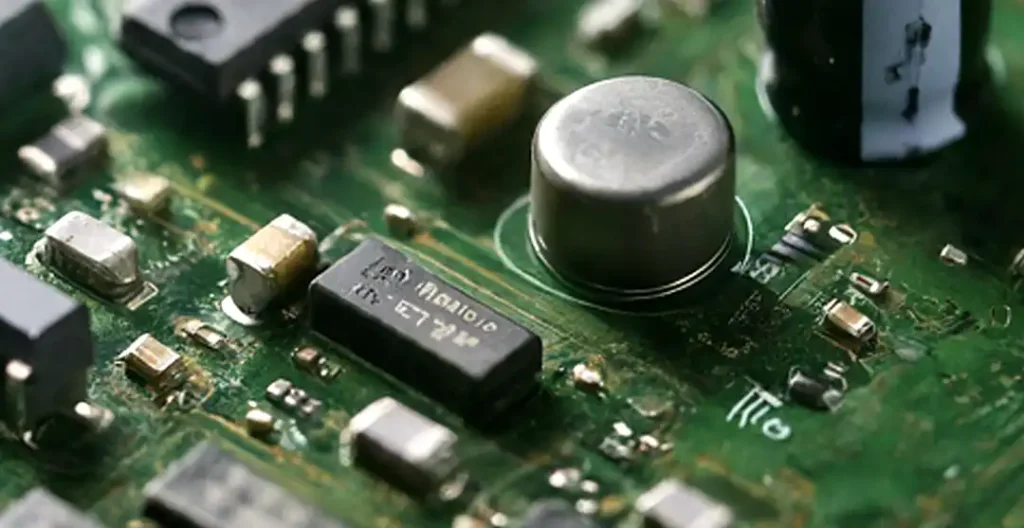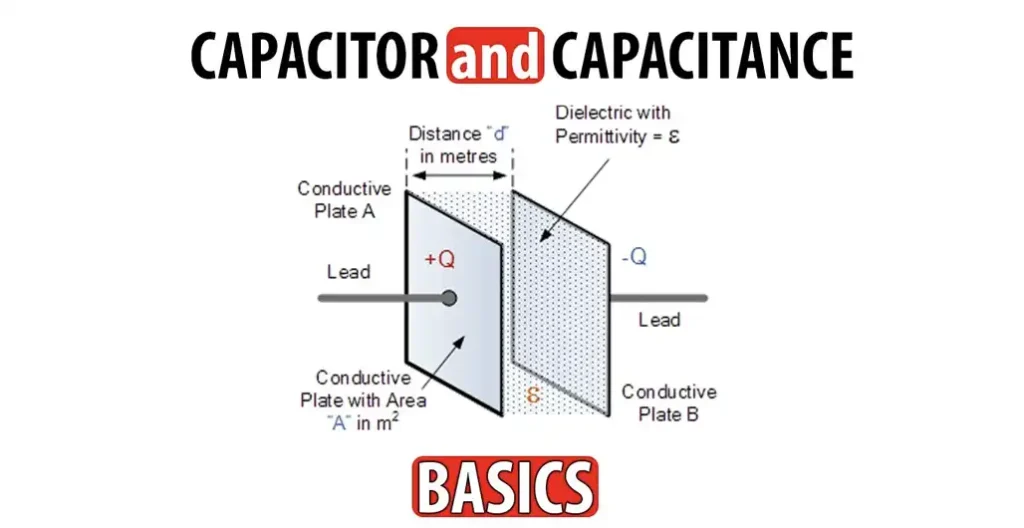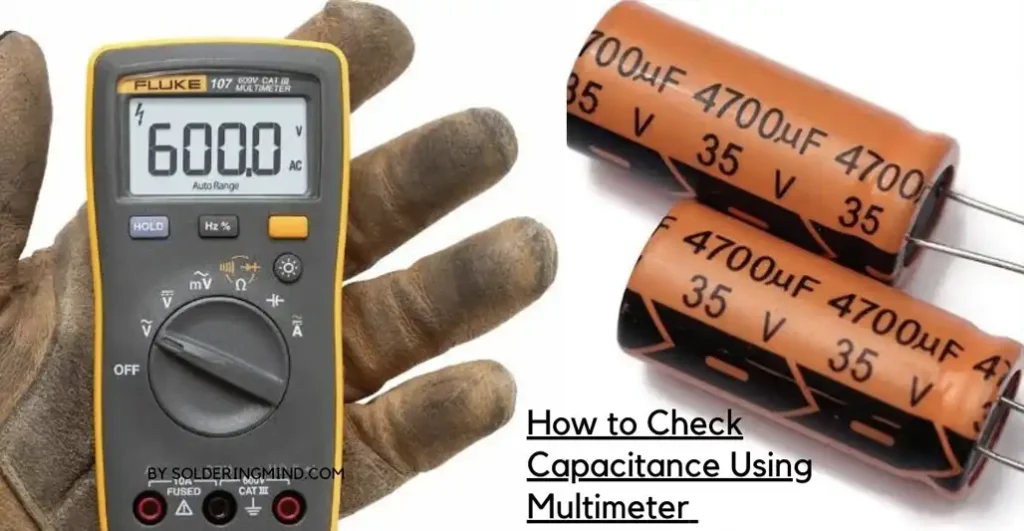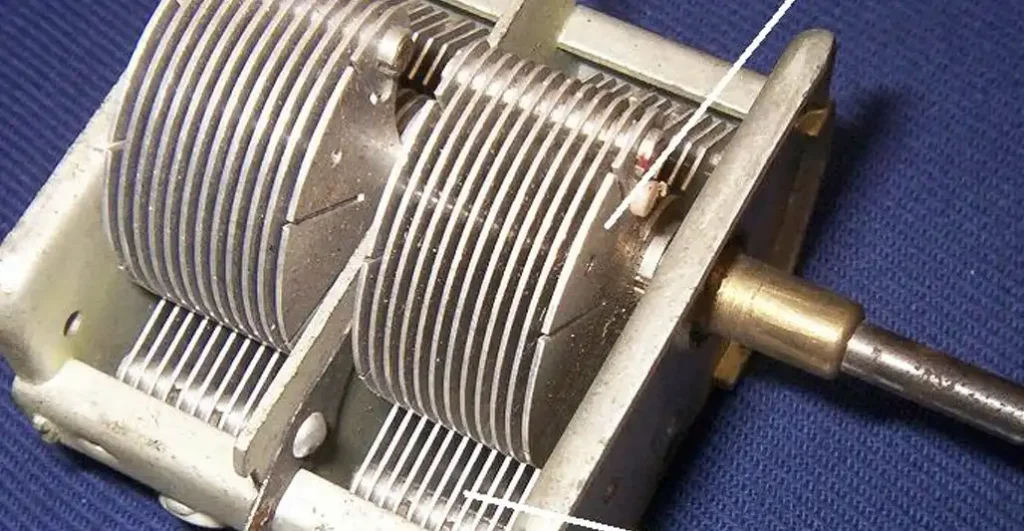Discover how a capacitor works, its crucial role in electronics, and why it’s essential for various applications. Learn about capacitance, charge storage, and more.
Capacitors are fundamental components in electronic circuits, but how do they actually work? In this comprehensive guide, we’ll delve into the intricacies of capacitors, unraveling the mystery behind their operation and exploring their crucial role in electronics.
What Are Capacitors?

Capacitors are ubiquitous in modern electronics, serving as essential components in countless devices, from smartphones to computers and everything in between. Despite their widespread use, many people remain unclear about how capacitors function. In this article, we’ll break down the workings of capacitors in simple terms, shedding light on their inner workings and explaining why they’re indispensable in electrical engineering.
Capacitance of a Capacitor

Capacitance is a fundamental property of capacitors, dictating their ability to store electrical charge. It refers to the amount of charge that a capacitor can hold per unit of voltage applied across it. In simpler terms, capacitance determines how much energy a capacitor can store.
When a voltage is applied to a capacitor, it creates an electric field between its two conductive plates, separated by a dielectric material. This electric field causes positive and negative charges to accumulate on the plates, with the amount of charge directly proportional to the applied voltage.
The capacitance (C) of a capacitor is measured in farads (F), named after the physicist Michael Faraday. One farad is equivalent to storing one coulomb of charge per volt applied. However, capacitors typically have capacitance values much smaller than one farad, often measured in microfarads (µF) or picofarads (pF).
How Does a Capacitor Work
A capacitor is an essential component in electronics, but understanding how it operates might seem like a mystery at first glance. Let’s unravel the workings of a capacitor in simple terms.
At its core, a capacitor consists of two conductive plates separated by a non-conductive material called a dielectric. When a voltage is applied across these plates, an electric field forms in the dielectric, causing positive and negative charges to accumulate on the plates.
Now, here’s where the magic happens: the capacitor stores electrical energy in this electric field. Think of it as a reservoir that can hold charge. When you connect a capacitor to a power source, it charges up as electrons accumulate on one plate and leave the other. Once fully charged, the capacitor can hold this energy until needed.
But how does it release this stored energy? That’s where things get interesting. When you connect a capacitor to a circuit, it can discharge its stored energy, releasing a burst of electrical power. This ability to store and release energy quickly makes capacitors invaluable in electronics for various tasks.
Imagine you have a flashlight powered by batteries. When you turn it on, the capacitor can provide an extra burst of energy to brighten the light, ensuring it stays steady even when the battery voltage drops momentarily.
Capacitors also play a crucial role in smoothing out voltage fluctuations. In electronic circuits, especially those with alternating current (AC), capacitors can absorb excess voltage spikes and provide a more stable output.
How to Check Capacitor is Working or Not Without Multimeter

Checking if a capacitor is functioning properly is crucial in troubleshooting electronic circuits.
While a multimeter is typically used for this task, there are alternative methods you can employ if you don’t have one at hand.
- Visual Inspection: Start by visually examining the capacitor. Look for any signs of physical damage such as bulging, leaking, or discoloration. A damaged capacitor is likely faulty and should be replaced.
- Listening for a Click: In some cases, a faulty capacitor may produce a clicking sound when power is applied. This clicking noise indicates internal damage and suggests that the capacitor is not functioning correctly.
- Observing Circuit Behavior: If the circuit containing the capacitor is not working as expected, it could indicate a faulty capacitor. For example, if a motor is not starting or a light is flickering intermittently, the capacitor might be the culprit.
- Using a Test Light: While not as accurate as a multimeter, a test light can help determine if a capacitor is holding a charge. Disconnect the capacitor from the circuit and discharge it by bridging the terminals with a resistor. Then, connect the test light in series with the capacitor and a power source. If the test light illuminates briefly and then dims, it indicates that the capacitor is charging and discharging properly.
- Substituting with Known Good Capacitor: If possible, swap the suspected faulty capacitor with a known good one of similar capacitance and voltage rating. If the circuit now functions correctly, it suggests that the original capacitor was indeed faulty.
- Professional Testing: If none of the above methods yield conclusive results, it may be best to seek professional assistance. Electronics repair shops or technicians have specialized equipment for testing capacitors accurately.
While these methods can help determine if a capacitor is faulty, keep in mind that they may not always provide definitive results. If in doubt, it’s always safer to replace a suspected faulty capacitor, especially if it’s a critical component in the circuit.
How Do Capacitors Work in a Circuit
Capacitors play a vital role in electronic circuits, contributing to various functions such as energy storage, filtering, timing, and voltage regulation. Understanding how capacitors work within a circuit is essential for designing and troubleshooting electronic systems effectively.
1. Energy Storage:
- When a voltage is applied to a capacitor within a circuit, it charges up by accumulating electric charge on its plates.
- The capacitor stores this electrical energy in an electric field between its plates, analogous to a rechargeable battery storing energy.
2. Filtering:
- Capacitors are commonly used in circuits to filter out unwanted noise or voltage fluctuations.
- By connecting a capacitor in parallel with a load or signal source, it can absorb and smooth out variations in voltage, ensuring a stable output.
3. Timing:
- Capacitors are integral to timing circuits, where they control the frequency and duration of electronic pulses.
- By combining capacitors with resistors or other components, engineers can create precise timing circuits used in applications such as oscillators and timers.
4. Voltage Regulation:
- In voltage regulation circuits, capacitors help stabilize voltage levels by storing and releasing electrical energy as needed.
- During voltage spikes or drops, capacitors can supply additional charge to maintain a consistent voltage across the circuit.
Working Principle:
- Capacitors consist of two conductive plates separated by a dielectric material.
- When a voltage is applied, one plate becomes positively charged, while the other plate becomes negatively charged.
- This charge separation creates an electric field in the dielectric, enabling the capacitor to store energy.
- Capacitors can then release this stored energy when needed, providing a burst of power or maintaining voltage stability within the circuit.
Applications:
- Capacitors are ubiquitous in electronic devices, ranging from simple circuits like power supplies and amplifiers to complex systems like computers and smartphones.
- They are used in audio systems for coupling and decoupling signals, in power supplies for smoothing voltage, and in motor circuits for starting and regulating speed, among countless other applications.
How Do Power Factor Correction Capacitors Work
Power factor correction capacitors are specialized capacitors designed to improve the power factor of electrical systems. Power factor is a measure of how efficiently electrical power is used in a circuit, and correcting it can lead to increased efficiency and reduced energy costs. Here’s how power factor correction capacitors work:
Understanding Power Factor:
- Power factor is the ratio of real power (measured in watts) to apparent power (measured in volt-amperes) in an electrical system.
- Ideally, power factor should be close to 1, indicating efficient use of electrical power. However, in many systems, power factor is lower due to the presence of inductive loads such as motors and transformers.
Reactive Power:
- Inductive loads in electrical systems cause a phase shift between voltage and current, leading to reactive power, which does not perform useful work but still contributes to the overall power consumption.
- Reactive power increases the apparent power in the system, resulting in higher energy costs and reduced efficiency.
Capacitive Reactive Power Compensation:
- Power factor correction capacitors are connected in parallel to inductive loads in electrical systems.
- These capacitors produce reactive power that opposes the reactive power produced by the inductive loads, effectively canceling it out.
- By adding capacitive reactive power to the system, the overall reactive power is reduced, leading to a higher power factor and improved system efficiency.
Reducing Line Losses:
- Improved power factor through the use of capacitors reduces the current drawn from the power source for a given amount of real power, resulting in reduced line losses and lower energy costs.
- Capacitors also help to alleviate voltage drops and improve voltage stability in electrical systems.
Automatic Power Factor Correction:
- In larger electrical systems, automatic power factor correction systems are employed to dynamically adjust the capacitance based on real-time measurements of power factor.
- These systems use control algorithms to monitor power factor and switch capacitors in or out of the circuit as needed to maintain optimal power factor levels.
Benefits of Power Factor Correction:
- Increased energy efficiency: Power factor correction reduces wasted energy, leading to lower electricity bills and reduced environmental impact.
- Improved voltage regulation: Capacitors help stabilize voltage levels in electrical systems, ensuring reliable operation of equipment.
- Compliance with regulations: Many utilities impose penalties for low power factor, making power factor correction essential for businesses seeking to avoid additional charges.
How Variable Capacitor Works

Variable capacitors, also known as variable capacitors or tuning capacitors, are components that allow for the adjustment of capacitance within an electronic circuit. They are commonly used in applications where precise tuning or adjustment of capacitance is required, such as in radio frequency (RF) circuits, oscillators, and filters. Here’s how variable capacitors work:
1. Construction:
- Variable capacitors consist of two or more conductive plates separated by a dielectric material, similar to fixed capacitors.
- However, one or more of these plates are movable, allowing for the adjustment of the distance between the plates and thus the capacitance.
2. Adjustable Plate Area:
- By changing the overlapping area between the movable and fixed plates, the effective capacitance of the variable capacitor can be altered.
- When the plates are closer together, the capacitance increases, and when they are farther apart, the capacitance decreases.
3. Tuning Mechanisms:
- Variable capacitors employ various mechanisms for adjusting the spacing between plates.
- One common mechanism is the use of a threaded shaft or rotor connected to one of the plates. Rotating the shaft changes the position of the movable plate relative to the fixed plates, thereby adjusting the capacitance.
- Another mechanism involves the use of parallel plates with interdigitated fingers that can slide over each other, providing a smooth and continuous adjustment of capacitance.
4. Applications:
- Variable capacitors are widely used in radio frequency (RF) circuits for tuning radio receivers, transmitters, and antennas.
- In oscillators and filters, variable capacitors are used to adjust the frequency response and resonance frequency of the circuit.
- They are also employed in voltage-controlled oscillators (VCOs) and phase-locked loops (PLLs) in communication systems and frequency synthesizers.
5. Capacitance Range and Stability:
- The capacitance range of variable capacitors varies depending on their design and intended application.
- Some variable capacitors have a relatively small capacitance range and are used for fine-tuning specific frequencies, while others have a wider range for broader frequency adjustments.
- Capacitance stability, or the ability to maintain a consistent capacitance value over time and environmental conditions, is an important consideration in high-precision applications.
6. Advantages and Limitations:
- Variable capacitors offer precise control and adjustment of capacitance, making them indispensable in many electronic circuits.
- However, they may have limitations such as limited lifespan, sensitivity to environmental factors like temperature and humidity, and mechanical wear in moving parts.
Applications of Capacitors
Filtering and Decoupling
In electronic circuits, capacitors are commonly used for filtering out unwanted noise and stabilizing voltage levels. By selectively allowing certain frequencies to pass while blocking others, capacitors ensure that signals remain clean and interference-free.
Timing and Oscillation
Capacitors play a crucial role in timing circuits and oscillators, where they control the frequency and duration of electronic pulses. By adjusting the capacitance value, engineers can fine-tune the timing characteristics of a circuit to meet specific requirements.
FAQs
What is the purpose of a capacitor in a circuit?
Capacitors store electrical energy and release it when needed, helping to stabilize voltage levels, filter out noise, and control the timing of electronic circuits.
How does a capacitor store energy?
A capacitor stores energy by accumulating opposite charges on its conductive plates when a voltage is applied across them. The energy is stored in the electric field between the plates.
Can a capacitor store alternating current (AC) as well as direct current (DC)?
Yes, capacitors can store both AC and DC energy. However, their behavior may vary depending on the frequency and impedance of the AC signal.
What factors affect the capacitance of a capacitor?
The capacitance of a capacitor depends on several factors, including the surface area of the plates, the distance between them, and the properties of the dielectric material.
Are there different types of capacitors?
Yes, capacitors come in various types, including ceramic, electrolytic, tantalum, and film capacitors, each with its own unique characteristics and applications.
Can capacitors be used to store large amounts of energy? While capacitors are efficient at storing small amounts of energy, they are typically not suited for storing large amounts due to their limited capacitance.
Conclusion
Capacitors are indispensable components in modern electronics, playing vital roles in circuit design, signal processing, and energy storage. By understanding how capacitors work and their various applications, engineers and enthusiasts alike can harness the power of these versatile devices to create innovative technologies and solve complex problems in the realm of electrical engineering.